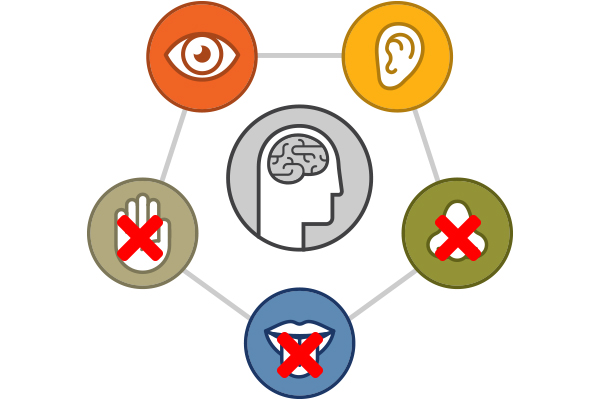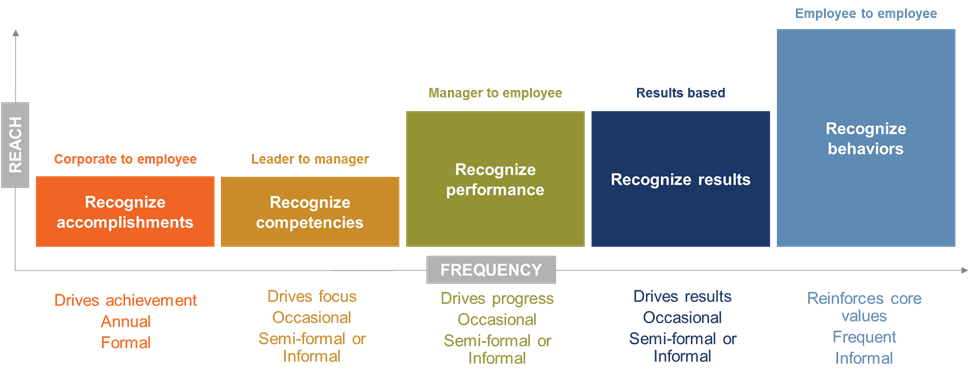Some say yes, some say no. Are you surviving or thriving?
In BI WORLDWIDE’s annual benchmark study on employee engagement, conducted in June 2020, we found that remote workers are just as committed to their organizations and working just as hard. But at the same time, they also report being less inspired.
We also know from our study of Applied Behavioural Economics (ABE) that rational thought and emotions combine within a particular culture to drive decisions and behaviour. In fact, 23 percent of behaviour is driven by reason, 77 percent of behaviour is driven by emotion. There are practical examples throughout our employee recognition and sales effectiveness programs. Through an extensive design and delivery process, we determine emotional triggers that will drive identified behaviours and ultimately the results our clients are looking for aligned with their strategy.
There are five human senses that can impact our emotions – taste, touch, sight, hearing, and smell. In our current situation, all of them have been impacted — not by choice — and it’s changing our perceptions.
Sensation is the physical process during which sensory systems respond to stimuli and provide data for perception.

What has changed? For many of us, we can no longer interact the way we used to. We can’t get together in the employee cafeteria to have a meal together or take a client to lunch. We can have a quick huddle to strategize in our meeting room from a distance, but we can’t shake hands to say hello.
To convey our greeting, we might be able to see each other, however, it’s either video, from far away or from behind a mask so you can’t judge emotion in the same way. Today, it’s all virtual and suddenly it’s less spontaneous. Perception is now impacted by internet speed, camera position, virtual backgrounds, and eye contact.
What drives inspiration? How does it change in this virtual world?
How do you maintain your company culture? Your mission, vision, and values matter more now than ever before. How do these manifest themselves when someone is working from home for the foreseeable future? Particularly when it may not be by choice and we don’t know when it will end. As humans, we like goals and framing. Today, much is unknown and it’s not comforting.
Leading with compassion is a theme that has emerged as essential, according to Dr. Brad Shuck of the University of Louisville. “Dysfunctional leaders can destroy an engaging culture and wreak havoc on long-term performance. On the other hand, leaders who are authentic, who treat employees with dignity and inclusion, and who create space for teams to do their best work can – they inspire a workplace that transforms and propels their organization forward.”
An organization can impact employees' experience through multiple forms of recognition that support your values. Each has different frequency and purpose. From daily recognition by a colleague to annual achievement awards, it’s more important than ever to have a strategy in place. The chart below is a good representation of how you might integrate multiple forms for multiple stakeholders.

How has recruitment and onboarding changed?
Although we have seen many furloughs and layoffs, as your business evolves eventually you will need to hire some key players or rebuild capacity. What are the perceptions of your employee brand in this virtual world? How has it been reshaped without a common physical space? How has your organization managed and communicated furloughs and layoffs and, in many cases, decreased revenues?
The longer this goes, the more we are going to have to revisit hiring and onboarding procedures. There was a time an integral part of the hiring process relied on an in-person meeting to validate if the person you envisioned from the resume has shown up for the interview. Back in the day, the theory being you could get a sense of a candidate’s immediate presence and learn from their body language and communication skills in person, their ability to carry a conversation listen, and react and respond. It’s simply different on the other side of a webcam.
Once you have decided to hire, how do you onboard new employees today? What is the right combination of in-person, video, and self-directed learning to allow them to get up to speed and be productive?
On day one, your new employee is saying to themselves “Did I make the right choice?”
Engaging your new employee immediately is important – particularly if done remotely. You need to get started early and develop the best first day experience that will make employees say, “This is the job for me.” In many cases, you may be able to have some form of physically distant introduction, but how will you ensure that they feel part of the team when you can’t? Engage managers to actively participate in the process with welcome kits and guides to ensure new hires feel like an important part of the team – even if new hires are working from home.
Assign a mentor to make sure that people have a point of contact – they don’t always want to ask the boss simple questions on their first day. We have all been there, you arrive at your new job and you are not expected. There isn’t a plan for you, rather a “self-study” program where you are left to fend for yourself. This is a waste of time and the new employee’s efforts may not set them up for long-term success.
Comprehensive new hire information and a creative employee welcome kit can make all the difference. Make it personal. It can be simply company equipment with set up information, personalized materials, an agenda, and resource tools.
Why does recognition matter, even more, today when we have limited physical or social contact? Employee recognition helps inspire employees because it:
1. Demonstrates appreciation
Recognizing employees for specific, identifiable actions proves you appreciate their skills and the company values them. If possible, do this early on in an employee’s tenure.
2. Focuses attention on your corporate values
Showing appreciation for employees exhibits your workplace values, including respect, fairness, open communication, teamwork, and more.
3. Builds an employee value proposition
Employees stay when they know their work is valued by you and company leaders. They quit when managers fail to show employee appreciation.
4. Nudges people to achieve more and achieve goals
When you publicly reinforce behaviours you want, you motivate employees to help the team reach its goals.
5. Fosters teamwork and collaboration
Recognizing employee teams builds camaraderie and a spirit of cooperation, while also boosting the credibility of the team, as well as your management.
6. Shows leadership commitment
Making sure your employees know they are valued and appreciated shows you really care about their success and their future at the company.
7. Celebrates commitment and longevity
Recognizing employee anniversaries is a great way to honour long-serving team members and it shows new employees the quality of commitment. (Pro tip: Think carefully about what “long-standing” means in your workforce. More and more, companies are recognizing employees sooner in their careers, like on their first or third anniversary.
What are some tools you can use to create a culture of recognition and impact the behaviours you want?
Peer-to-Peer Manager Discretionary recognition (with or without award reward points)
Everyone likes to be appreciated, to know that their colleagues or manager notices the work you are doing. It actually increases levels of commitment and the magnitude of that commitment. Adding reward points can magnify that impact as well.
Nominations
The impact of recognition can be exponential when being recognized in a more formal way around specific behaviours by a colleague or manager. Nomination programs align organizational priorities and provide a line of sight for senior leadership to the effort of individuals.
What are the impacts or repetitive recognition?
When effectively recognizing employees with praise that is immediate, focused, genuine, and positive, the results are meaningful:
Create focus and clarity of the organization’s mission and values
According to Rosabeth Moss Kanter, a leading expert in motivation and recognition, “Recognition creates role models and heroes and communicates standards. It says: these are the kinds of things that are valued here.”
Build loyalty
Simply said, employee retention is higher in organizations — regardless of industry — when you are told that you are noticed and valued for your contribution.
Motivate and drive heightened performance
Over time, employees tend to fall into a cadence of regular performance. When recognized for incremental effort and performance, the inclination is to strive for the next level.
Increase morale and employee attitudes
Repetitive exposure to positive recognition improves the work environment and it spreads rapidly throughout the organization.
Enhance productivity
Increased intensity of performance is well documented in our studies. Those who receive ongoing recognition are more effective and focused on exceeding expectations.
Reduce turnover
In our study of over 30,000 employees, we learned that turnover is 17.7 percent less among employees receiving at least one recognition. There is a correlation between frequency of receiving recognitions and turnover. Employee turnover decreases as frequency of recognition increases. A 10-percentage point reduction in turnover is seen between low to high receiving rate.
A positive correlation existed between employee turnover and recognition receiving rate, driven almost exclusively by those receiving recognitions with awards. Turnover is 4x higher among employees with the lowest ‘recognitions with awards’ receiving rates compared to the highest rate of receiving recognition with awards.
The best way to get started is to get in touch.













